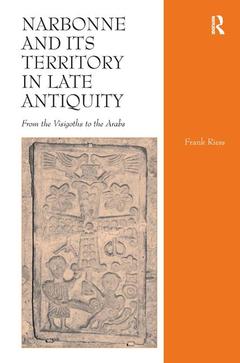Narbonne and its Territory in Late Antiquity From the Visigoths to the Arabs

Narbonne and the Roman world of the 4th century. Christian and Classical histories of Narbonne. Sidonius and the passing of Roman Narbonne. The Visigothic kingdom: from Liuva I to Reccared. The North-east and the territory of Narbonne. Rebellion on the border: the Regnum Orientalis. The Arabs and the fall of Narbonne. The first and last city.
Frank Riess is an Honorary Research Fellow at Birkbeck College, London, UK.
Date de parution : 10-2013
15.6x23.4 cm
Date de parution : 12-2019
15.6x23.4 cm
Thème de Narbonne and its Territory in Late Antiquity :
Mots-clés :
Frankish Realm; Sea Water; Gallia Narbonensis; Notitia Galliarum; Ordo Urbium Nobilium; Gesta Comitum Barcinonensium; Hispania Ulterior; Alfonso Iii; Gallo Roman Aristocracy; Rutilius Namatianus; Visigothic State; Montagne Noire; Galla Placidia; Hill Top; Hispania Citerior; Chlothar II; Visigothic Monarchy; Sulpicius Severus; Toledo IV; Coin Finds; Berber Landings; Visigothic Kingdom; Theuderic II; Decimus Magnus Ausonius; Pomponius Mela



